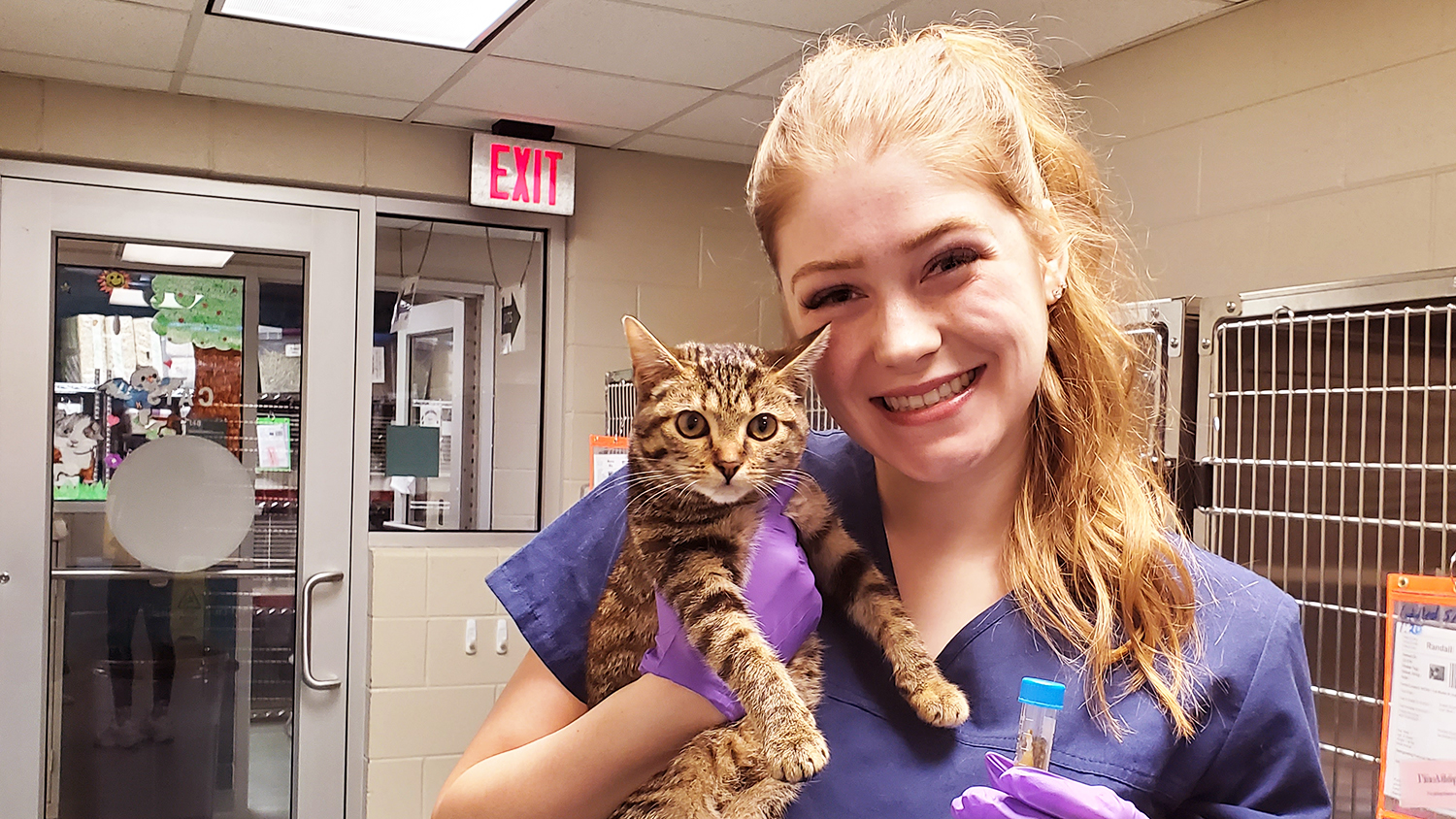
Student collecting samples from cats
May 21, 2021 | Dee Shore
See the original article here
Research suggests that the trillions of microbes living in a person’s gut can prevent and treat many diseases, and the colony of microbes – known as the microbiome – is influenced by a number of factors, including diet. But what about cats? What factors affect the types of microbes in their gut? And how does that relate to their health?
A new study from NC State University aims to shed light on these questions by exploring the differences between the gut microbes of cats living in shelters and those that have owners.
Kimberly Ange-van Heugten is the project’s principal investigator, and Shweta Trivedi is the co-PI. Both are teaching associate professors in the Department of Animal Science.
A First-of-Its-Kind Study
Ange-van Heugten has studied the gut microbiome in chimpanzees, gorillas and rhinos, but she’s new to studying the microbiome of a companion animal species. And the feline research is unlike any that’s come before, she said.
“There’s not a lot known about the microbiome in cats at this point,” Ange-van Heugten said. “This project will be the largest and longest feline microbiome collection known to date. It will allow us to learn more about how the domestic cat’s microbiome is altered by a range of factors.”
Those factors include a cat’s age, body condition, diarrhea and other disease states, gender, genetic relatedness and time.
The research should give scientists a better idea of what the microbiome looks like for a large number of cats from one area – Wake County – and whether it looks different for healthy and unhealthy ones.
A University and Private Industry Collaboration
The project is a collaboration between NC State and Nom Nom, a subscription-based pet health company that formulates and delivers cutting-edge healthy pet foods and supplements.
Nom Nom’s Director of Microbiology Ryan Honaker is helping with the research design, data analysis and graduate student training, while the company is funding the microbiome sequencing analyses of the fecal samples and some of graduate student Molly Kittson’s tuition and travel expenses.
Honaker noted that he and others with Nom Nom “are excited to be partnering with such a great program to help advance the understanding of the role of the microbiome in feline health.”
The study’s long-term goal, Ange-van Heugten said, is to explore whether there might be ways to improve cats’ health, perhaps by providing them with prebiotics and probiotics in their diet. Probiotics are beneficial bacteria contained in food, while prebiotics are types of fiber that feed healthy gut bacteria.
Involving Students and Others
Kittson, a master’s student studying animal science and nutrition, is carrying out much of the study’s legwork, visiting Wake County’s animal shelter three days a week to collect fecal samples as well as data about each of the factors she’s studying. She’s also sending collection kits to allow personal cat owners to collect and submit samples.
Kittson plans to collect samples and information from 300 shelter cats and 50 owned cats by the end of the summer.
Shweta Trivedi said a shelter medicine pre-veterinary internship partnership with the Wake County Animal Center helped greatly in getting the large number of samples needed for the study. The center’s chief veterinarian, Sandra Strong, who will soon join an Orange County shelter, has also provided significant assistance.
As Trivedi added, “The ongoing companion animal microbiome research serves to train graduate students, while also providing potential hands-on experience for undergraduates.”
Helping Shelter Cats and Owned Cats Stay Healthy
In the end, Ange-van Heugten said, the research team hopes to know more about ways they can help shelter animals remain healthy or get healthier once they get to the shelter, because that can influence how quickly they are adopted and ensure they stay in their new homes.
“Sick animals don’t always get adopted very fast, and if we can find the weaknesses in the microbiome then maybe we can help address them so cats can go into homes healthier,” she said.
Kittson agreed, adding that the results should also have implications for cats with owners.
“My long-term goals are to have healthier cats, whether they are owned or in shelters, and to keep more cats in homes,” she said.